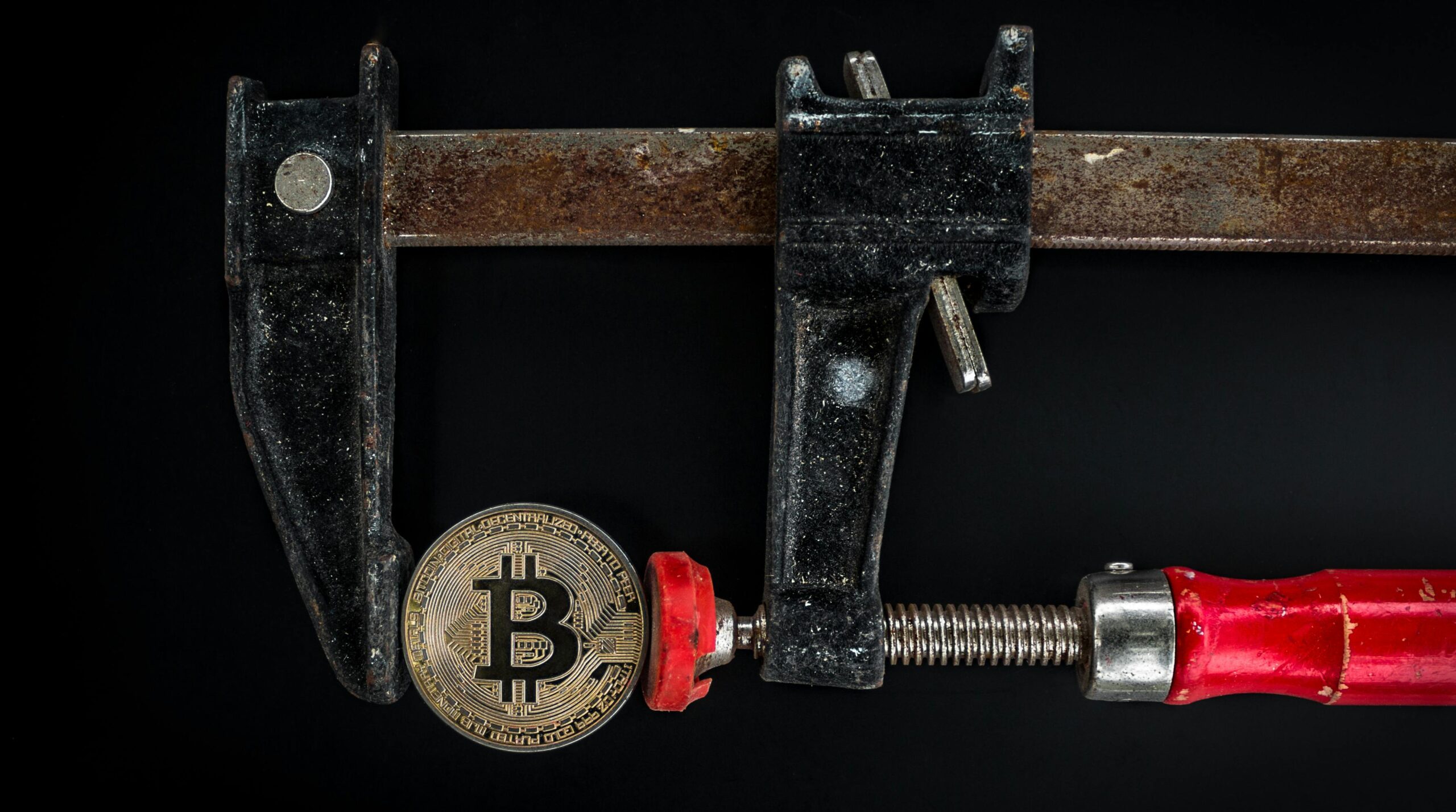
In simple terms, crypto farming is a way to earn additional cryptocurrency by leveraging your existing digital assets. Think of it like planting seeds (your crypto) and harvesting rewards (more crypto) through various methods. Now, before you picture yourself in a digital wheat field, these methods involve interacting with decentralized finance (DeFi) protocols, which are fancy ways of saying special tools built on blockchain technology.
Here’s the breakdown:
- The Seeds: Your Crypto Assets – Crypto farming works by utilizing the digital assets you already own. This could be Bitcoin, Ethereum, or any other cryptocurrency you hold.
- The Fields: Decentralized Finance (DeFi) Protocols – These are specialized tools built on blockchain technology, essentially acting as the “farms” where your crypto goes to work. DeFi protocols offer different ways to put your crypto to use, and each method comes with its own set of rewards.
How does the harvesting happen?
DeFi protocols rely on a concept called liquidity. Imagine a smooth-running lemonade stand – it needs plenty of lemons and sugar to keep customers happy, right? In the world of crypto, liquidity refers to the ease with which cryptocurrencies can be bought and sold. DeFi platforms often need a steady flow of digital assets to facilitate trading, and that’s where crypto farmers come in.
By locking up your crypto in these DeFi protocols, you essentially contribute to the overall liquidity of the system. In return for providing this valuable service, you earn rewards – typically in the form of the protocol’s own token or even a share of trading fees.
Think of it like this: You loan your tools (crypto) to a community garden (DeFi protocol) in exchange for a share of the harvest (rewards). Everyone wins! The DeFi platform benefits from increased liquidity, and you get rewarded for contributing your crypto assets.
Planting the Seeds: Your Step-by-Step Guide to Crypto Farming:
Here’s a step-by-step guide to get you started:
Step 1: Gear Up – Choose Your Crypto Farming Tools
Before diving headfirst, it’s essential to pick the right crypto farming method. Here are a few popular options to consider:
- Liquidity pools: As mentioned earlier, these pools are the heart of DeFi and require you to deposit equal amounts of two different cryptocurrencies. By providing liquidity, you earn rewards based on trading fees generated within the pool.
- Staking: This involves locking up your crypto assets in a specific DeFi protocol for a set period. In return, you earn interest on your holdings, similar to a traditional savings account but with potentially higher returns (and risks!).
- Yield Farming: This strategy involves actively moving your crypto between different DeFi protocols to chase the highest yields. It can be more complex and carries greater risk, so it’s best suited for experienced crypto users.
Step 2: Find Your Farm – Choose a DeFi Platform
Once you’ve chosen your farming method, it’s time to select a reputable DeFi platform. Here are some key factors to consider:
- Security: Make sure the platform has a strong security track record and implements robust security measures to protect your crypto assets.
- Supported Cryptocurrencies: Ensure the platform supports the cryptos you want to farm with.
- Fees: Research the associated fees of the platform, including transaction fees and any platform-specific charges. User reviews and online resources can be helpful for gathering this information.
Step 3: Connect Your Crypto Wallet
To interact with DeFi protocols, you’ll need a crypto wallet that allows you to connect to them. Popular choices include MetaMask or WalletConnect. Remember, never share your wallet’s private key with anyone!
Step 4: Plant Your Seeds (Deposit Crypto)
Once you’ve connected your wallet, it’s time to deposit the crypto assets you’ll be using for farming according to your chosen method.
Step 5: Sit Back, Relax, and Harvest (Earn Rewards)
Depending on the method, your rewards may accrue automatically or require manual claiming. Always double-check the platform’s instructions to ensure you’re maximizing your harvest!
Bonus Tip: Start Small and Stay Vigilant
Crypto farming, while potentially lucrative, comes with inherent risks. It’s wise to start small with a portion of your crypto holdings that you can afford to lose. Remember, the DeFi space is constantly evolving, so staying informed about potential risks and scams is crucial.
Crypto Farming vs. Staking: Picking Your Plot
Both crypto farming and staking allow you to earn rewards with your crypto holdings, but they differ in approach and risk profile. Here’s a breakdown to help you choose the right method:
| Feature | Crypto Farming | Staking |
|---|---|---|
| Method | Utilizes various DeFi protocols | Locking up crypto in a specific DeFi protocol |
| Complexity | Generally more complex, requires active management | Simpler, often requires minimal management |
| Risks | Higher risk due to potential impermanent loss and protocol risks | Lower risk, but still susceptible to price fluctuations |
| Returns | Potentially higher returns, but not guaranteed | Consistent, but typically lower returns |
| Suitability | Experienced crypto users comfortable with DeFi | Investors seeking a more passive income stream |
Here’s a deeper dive into some important points:
- Impermanent Loss: This is a unique risk associated with crypto farming, particularly when using liquidity pools. If the prices of the deposited cryptocurrencies fluctuate significantly, you could end up with a lower overall value when you withdraw your assets, even if you’ve earned rewards.
- Protocol Risks: DeFi platforms are still a developing technology, and some may have vulnerabilities. It’s crucial to research the platform’s reputation and security measures before committing your crypto.
Legality of Crypto Farming: A Patchwork of Regulations
The legal landscape surrounding crypto farming is still evolving and varies depending on your location. Here’s what you need to consider:
- No Central Authority: Cryptocurrencies operate outside the traditional financial system, so there’s no single global regulatory body overseeing crypto farming.
- Regional Regulations: Individual countries or regions might have specific regulations regarding crypto activities, including farming.
- Tax Implications: Earnings from crypto farming may be subject to capital gains taxes or other regulations depending on your jurisdiction.
It’s important to research the specific regulations in your area before engaging in crypto farming. There are resources available online and from qualified financial advisors that can help you navigate the legal complexities.
Pros and Cons of Crypto Farming: Weighing the Harvest
Pros:
- Passive Income: Earn rewards on your existing crypto holdings without actively trading.
- Potentially Higher Yields: Crypto farming can offer higher returns compared to traditional savings accounts.
- Growing DeFi Ecosystem: Participating in DeFi can contribute to the growth and innovation of the crypto space.
Cons:
- Volatility: Cryptocurrency markets are inherently volatile, impacting both your farming rewards and the value of your holdings.
- Technical Complexity: Crypto farming often requires a deeper understanding of DeFi protocols and associated risks.
- Security Concerns: DeFi platforms can be vulnerable to hacks and scams, so thorough research is essential.
Conclusion:
Crypto farming lets you grow your crypto holdings by leveraging DeFi protocols. Think of it like depositing your crypto seeds (assets) in specialized farms (DeFi platforms) to earn rewards. You can contribute to liquidity pools, stake your crypto, or actively chase yields across different platforms.
Getting started involves choosing your farming method, selecting a reputable DeFi platform, connecting your crypto wallet, and depositing your assets. Remember, crypto farming carries inherent risks, so start small, prioritize security, and stay informed. With a cautious approach, you can explore the potential of crypto farming and cultivate a flourishing crypto portfolio!
References:
FAQs:
Q: How do I start farming in crypto?
Crypto farming involves leveraging DeFi protocols to earn rewards on your existing crypto holdings. Here’s a simplified roadmap:
Choose Your Farming Method: There are different ways to farm crypto, like liquidity pools, staking, or yield farming. Each has its own risk profile and complexity. Research to find the method that suits your comfort level and goals.
Select a DeFi Platform: Not all platforms are created equal! Look for reputable DeFi protocols with strong security measures and support for the cryptocurrencies you want to farm.
Connect Your Crypto Wallet: You’ll need a crypto wallet that allows you to interact with DeFi platforms. Popular options include MetaMask or WalletConnect. Remember, never share your wallet’s private key with anyone!
Deposit Your Crypto Assets: Once connected, deposit the crypto you’ll be using for farming according to your chosen method.
Start Earning Rewards: Depending on the method, your rewards may accrue automatically or require manual claiming. Always double-check the platform’s instructions!
Q: Is yield farming profitable?
Yield farming has the potential for higher returns compared to traditional savings accounts. However, it’s not a guaranteed path to riches. Here’s why:
Volatility: Crypto markets are inherently volatile, impacting both your farming rewards and the value of your holdings.
Impermanent Loss: This risk is specific to liquidity pools. If the prices of your deposited cryptocurrencies fluctuate significantly, you could end up with a lower overall value even with farming rewards.
Q: Is crypto farming illegal?
The legality of crypto farming isn’t a simple yes or no answer. Here’s the breakdown:
No Central Authority: Cryptocurrencies operate outside the traditional financial system, so there’s no single global law governing crypto farming.
Regional Regulations: Individual countries or regions might have specific regulations regarding crypto activities, including farming.
Tax Implications: Earnings from crypto farming may be subject to capital gains taxes or other regulations depending on your jurisdiction.
Q: Is crypto farming safe?
Crypto farming introduces security risks that require vigilance:
Protocol Risks: DeFi platforms are still a developing technology, and some may have vulnerabilities. Research the platform’s reputation and security measures before committing your crypto.
Scams: Unfortunately, scams exist in the crypto space. Be cautious of unrealistic promises and always verify information before interacting with any DeFi platform.







